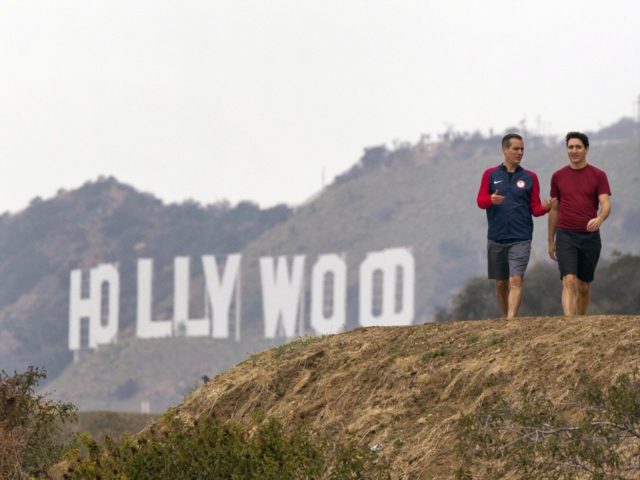Canada’s Prime Minister Justin Trudeau toured California tech communities last weekend to drum up “Resistance” to President Trump’s threat to dump the North American Free Trade Agreement (NAFTA).
Traveling with California Democrats Gov. Jerry Brown and Lt. Gov. Gavin Newsom on a three-day tour that began Feb. 8 with a San Francisco meeting, Trudeau began by trying to drum up support from Silicon Valley globalist leaders for the March second-round meeting between the U.S., Canada, and Mexico to update the increasingly controversial 24-year-old NAFTA trade pact.
Trudeau picked up Canadian investment commitments of $2 billion from Salesforce CEO Marc Benioff, and 300 jobs from cloud subscription service provider AppDirect.
Trudeau then moved down to Southern California for a speech at the Ronald Reagan Presidential Library, where he criticized President Trump’s threat to pull out of NAFTA because too many American workers have been left behind in the globalist economy.
Trudeau claimed that Canada would not renegotiate NAFTA if it resulted in an unfavorable trade deal for Canada. But Trudeau tried to seem sympathetic to American workers who have lost jobs under global trade deals by adding: “We need to collectively do a much better job of ensuring the benefits of trade are shared more broadly.”
Trudeau trumpeted that trade between the U.S. and Canada amounted to $627.8 billion in 2016, and that the U.S. had a net $12.5 billion trade surplus with Canada. The message was well received from Silicon Valley and Silicon Beach tech firms that enjoy a big share of the $27.3 billion U.S. trade surplus with Canada in the service sector.
But Trudeau failed to mention that U.S. manufactured goods exports to Canada fell by $14.6 billion in 2016, and the U.S. now has a $14.8 billion goods deficit. He also did not acknowledge the $83.9 billion U.S. foreign direct investment deficit with Canada.
Trudeau knows that NAFTA’s Article 2205 states: “A party may withdraw from this agreement six months after it provides written notice of withdrawal to the other parties. If a party withdraws, the agreement shall remain in force for the remaining parties.”
President Trump has the authority to issue an executive order to declare the restoration of U.S. tariff levels under the World Trade Organization, although some experts believe Canada could claim rights under a bilateral agreement with the U.S. from 1987 that predated NAFTA.
Such a move would undoubtedly be met with legal challenges from U.S. multi-national corporations that would argue the U.S. Constitution grants Congress authority over international trade. Chamber of Commerce President Tom Donohue called dumping NAFTA a “grave mistake” that would knock the U.S. economy “five steps back.”
A May 2017 Pew Research poll revealed that 74 percent of Canadians and 60 percent of Mexicans believe that NAFTA is good for their respective nations.
Pew Research reported in a Nov. 2017 poll that 56 percent of Americans believe that NAFTA is good for the U.S. But NAFTA’s popularity was only due to 73 percent support from Democrats. Republicans and independents are opposed to NAFTA, with 54 percent stating the deal is bad for America, versus 35 percent that say it is good for the U.S.

COMMENTS
Please let us know if you're having issues with commenting.